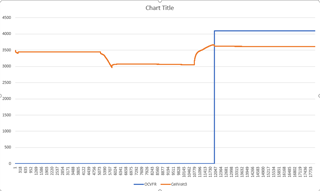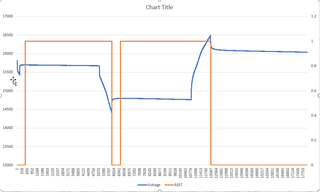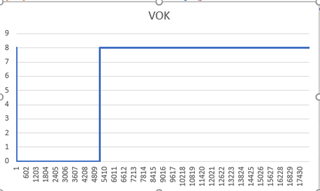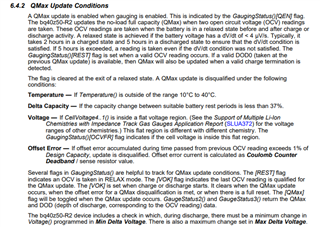Tool/software:
Hello,
We are trying to get external cell balancing working in our system, but having problems.
Our system is a series-stack of 4 cells and, to check cell balancing, Cell 3 is more discharged compared to the other cells to create an obvious imbalance. For this experiment, we started with the system at UpdateStatus=0x6 (in fact, we loaded the data memory .gg.csv file from the end of a successful learning cycle), then tried to get the gauge to make a Qmax update and cell-balancing calculation via a rest-discharge-rest sequence, then charged the cells to full to (hopefully) see cell balancing activate. In particular, here's what we did:
1) A quick discharge (just to distinguish the upcoming rest).
2) A rest for 5.5 hours (to allow a DOD1 measurement).
3) A long discharge, of about 44% RSOC (to satisfy the 37% delta capacity requirement).
4) A rest for 5.5 hours (to allow a DOD2 measurement, and hence a Qmax update and a cell-balancing calculation).
5) A charge to full (to see the cell balancing turn on).
The idea here was to make the system perform a Qmax measurement (via steps 2 and 4) and set UpdateStatus=0xE, then do a full charging and see cell balancing turn on. However, when we do this experiment, no cell balancing occurs--the OperationStatus[CB] flag does not ever go to 1. In fact, ITStatus[QMAX] never goes to 1, meaning no Qmax measurement is made during step 4 (we also confirmed that UpdateStatus never goes to 0xE, but stays constant at 0x6). What are we doing wrong? From our understanding, if nothing else the gauge should make a Qmax-qualified OCV measurement after 5 hours in relax, so we should have gotten Qmax-qualified measurements during our two 5.5 hour rests. But for some reason, that didn't happen.
For reference, we have included the .log file, and also the starting .gg.csv file, for the above run.
Thanks,
- charlie
run_learning_cycle_20240823_161155_trim.log1run_learning_cycle_autoexport_20240823_161155.gg.csv





